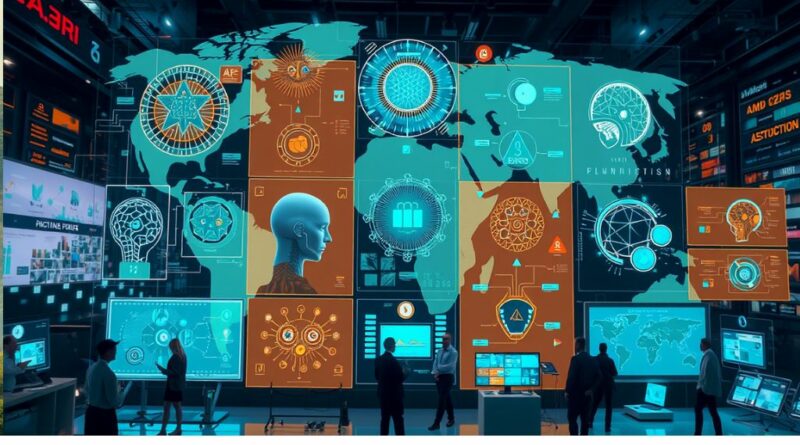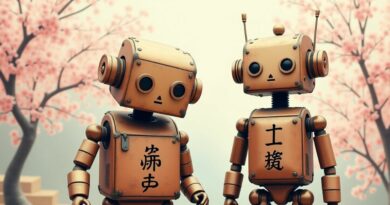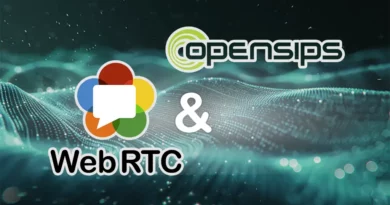All the AI apps: Same foundations…unique results?
Imagine a room full of identical twins, raised in the same home, educated in the same school, fed the same diet of knowledge, and granted identical tools to explore the world. Would we expect each twin to paint a wholly original masterpiece, pen a novel unlike any other, or devise a singular philosophy? Most of us would hesitate—surely, such uniformity in upbringing would nudge their outputs towards eerie similarity. Now, transplant this thought experiment into the realm of artificial intelligence. If AI applications—built on the same infrastructure, fuelled by identical technology, trained with the same learning models, and granted unfettered access to the same sprawling internet, archives, datasets, databases, and libraries—conduct their research, how can we reasonably anticipate unique results? It’s a question that tantalises technologists, philosophers, and anyone peering into the future of machine intelligence.
The Mirror of Sameness
At first glance, the premise seems to guarantee homogeneity. Picture a fleet of AI apps, each a carbon copy of the other: same neural architecture, same algorithms humming beneath the surface, same vast reservoirs of data from which they sip. The internet—a chaotic, ever-expanding library of human thought—is their shared playground. So too are the meticulously curated datasets, the dusty digital archives, and the humming databases that catalogue everything from ancient manuscripts to yesterday’s tweets. If the inputs are identical and the processing machinery indistinguishable, logic suggests the outputs should align like soldiers in lockstep.
Consider the training process, the beating heart of modern AI. These systems are fed colossal datasets, their neural networks tweaked and tuned to recognise patterns, predict outcomes, and generate responses. If two AI systems digest the same corpus—say, the entirety of Wikipedia, digitised libraries, and a decade’s worth of social media chatter—while employing the same learning model (a transformer architecture, perhaps, or a reinforcement learning framework), their “understanding” of the world should converge. Add identical research and interpretation models—rules dictating how to weigh evidence, prioritise sources, or infer meaning—and the case for uniformity strengthens. Why, then, should we expect divergence?
The Cracks in the Code
Yet, the story doesn’t end there. Even within this mirrored landscape, subtle fissures emerge, hinting at the possibility of uniqueness. One crack lies in randomness—an often-overlooked spice in the AI recipe. Many algorithms, particularly those powering generative AI, incorporate stochastic elements. A dash of randomness in how weights are initialised in a neural network, or in how data is sampled during training, can nudge two identical systems onto slightly different paths. Over millions of iterations, these tiny deviations might amplify, yielding outputs that diverge in tone, emphasis, or creativity.
Then there’s the matter of interaction. AI doesn’t exist in a vacuum; it dances with users. Two identical systems might be tasked with answering the same question—”What’s the future of energy?”—but the phrasing, context, or follow-up prompts from users could steer them differently. One might prioritise solar innovations, another nuclear fusion, each reflecting the user’s nudges rather than an inherent “opinion.” Over time, these interactions could shape distinct personalities or specialisations, even if the underlying tech remains a doppelgänger.
The Human Echo
Perhaps the most intriguing twist lies in interpretation. AI systems don’t merely regurgitate data; they process it through models designed by humans—humans with biases, quirks, and intent. If two teams of engineers, despite using the same tech stack, imbue their AIs with subtly different goals—one prioritising clarity, another creativity—the results could diverge. It’s less about the AI’s “uniqueness” and more about the human fingerprints smudged across its lens. In this sense, the AI becomes a mirror not of itself, but of its creators and users.
Take language models as an example. Two AIs trained on the same global corpus might still differ if one is fine-tuned to mimic Shakespearean flourish while the other adopts a minimalist, Hemingway-esque brevity. The raw data is identical, but the human hand sculpting the output bends it into distinct shapes. Here, uniqueness isn’t born from the AI’s core, but from the edges where human intent meets machine capability.
The Limits of Expectation
So, can we expect unique results from such uniform AI? The answer dances between “no” and “maybe.” If we strip away randomness, user interaction, and human tweaking, the outputs should, in theory, converge—much like identical twins reciting a memorised poem. But real-world AI isn’t so sterile. Randomness injects chaos, users tug at the reins, and engineers whisper their preferences into the code. These variables, however small, ensure that even identical systems might occasionally surprise us.
Yet, there’s a deeper question lurking: does uniqueness matter? If two AIs deliver equally accurate, useful answers—say, diagnosing a disease or plotting a climate model—do we care if their prose or reasoning differs? Perhaps the obsession with uniqueness is a human hang-up, a projection of our own need to stand apart. For AI, utility might trump individuality.
The Horizon Ahead
As AI evolves, the balance may shift. Developers could intentionally amplify divergence, crafting systems that deliberately “rebel” against their twins—seeding more randomness, tailoring training to niche domains, or letting AIs learn from their own outputs in recursive loops. Alternatively, convergence might become the goal: a unified AI “truth” distilled from identical foundations. Either way, the interplay of sameness and difference will shape how we trust, deploy, and coexist with these digital minds.
The challenge, therefore, lies in fostering an environment where AI can transcend its inherent limitations and achieve genuine originality. This requires a concerted effort from researchers, developers, and policymakers to ensure that AI systems are not simply replicating existing knowledge, but also contributing to its expansion. Only then can we truly harness the transformative power of artificial intelligence.



